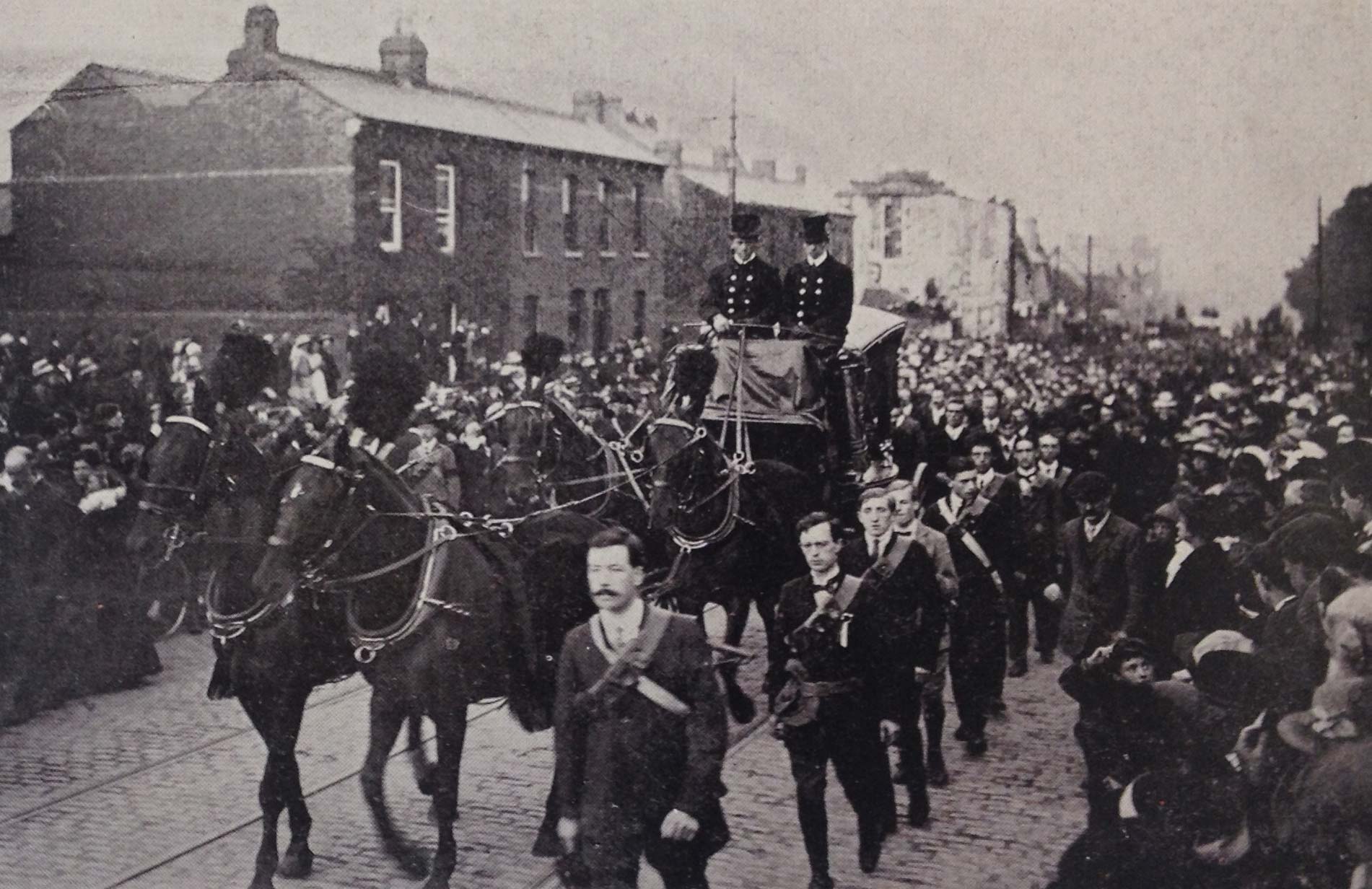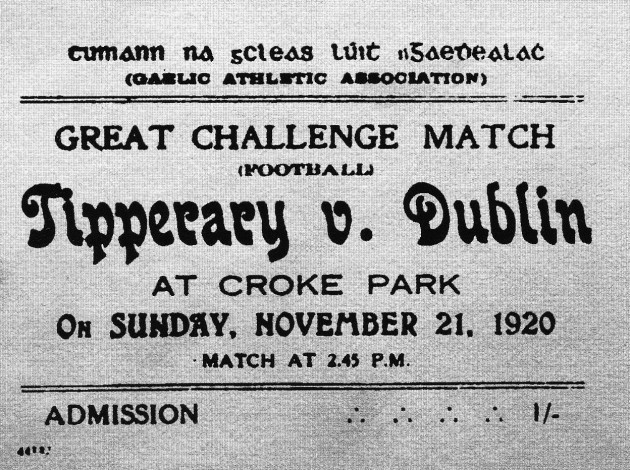Ger Leddin takes a look five historically significant massacres which occurred in Ireland.
A massacre is defined as an indiscriminate and brutal slaughter of many people.
Unfortunately down throughout the ages, the Island of Ireland has witnessed far too many massacres; killings, which have shocked us.
When researching this topic, I was shocked to discover that Ireland has had at least forty mass killings that can be described as massacres Even as far back as 900 AD when the Vikings massacred 600 people at Simonscourt Castle we on this Island have suffered.
Unfortunately, most of those massacres that occurred down through the centuries can be attributed to the Northern Ireland troubles and the conflicts involving the move for Irish independence.
In this feature, we look at just five of those many massacres which occurred during those darkest of times, chosen on the bases of how these deeds swayed public opinion, perceptions and brought about political change. These events aren’t ordered in any way as they are all tragic.
1. The Rathlin Island Massacre — 26 July 1575

Rathlin Island is situated off the coast of County Antrim. It is a rocky and wild coastline and very susceptible to strong winds. This made it an ideal location for the MacDonnell clan to seek refuge and base themselves while they planned then undertook their resistance to what was termed the Enterprise of Ulster — Queen Elizabeth’s early plantation of that province.
Sir Francis Drake and Sir John Norreys were instructed by the Crown to attack the MacDonnells and their allies grouped on the island.
The English used cannons to batter Rathlin’s castle and then when the walls gave in, conducted a direct attack forcing the Irish and Scottish rebels to surrender.
All the defending soldiers were then killed, and on 26 July 1575, Norreys’ forces hunted the old, sick, very young and women non-combatants who were hiding in the island’s caves. Despite the early surrender of the rebels, the English forces killed not only all the defenders but also more than four-hundred civilian men, women and children.
The entire family of the clan leader Sorley Boy MacDonnell perished in the massacre. The Earl of Essex, who ordered the killings, boasted in a letter to Queen Elizabeth’s secretary that Sorley Boy MacDonnell watched the massacre from the mainland helpless to aid and was “like to run mad from sorrow.”
2. The Bachelor’s Walk massacre Dublin — 26 July 1914

A column of troops of the King’s Own Scottish Borderers was accosted by a crowd of protesters on Bachelor’s Walk Dublin.
The troops retaliated to, what was later described as a “hostile but unarmed” protest, with rifle fire and bayonet charges.
Four protesters died, and more than thirty others were injured in the violence.
The incident provided a moment of political opportunity for Irish nationalists, and the deaths of unarmed Dublin civilians caused Patrick Pearse to declare:
“The army is an object of odium, and the Volunteers are the heroes of the hour. The whole movement, the whole country, has been re-baptised by bloodshed for Ireland.”
3. Bloody Sunday – 21 November, 1920

Considered one of the most violent and dramatic acts of the Irish War of Independence.
On the afternoon of the 21st of November members of the Auxiliary Division of the British Army and RIC first entered, then opened fire on a crowd of spectators and players at a Gaelic football match in Croke Park, killing eleven civilians outright and wounding at least sixty, three of whom died later.
The Croke Park killings were said to be an act of retaliation by the British forces to an Irish Republican Army (IRA) operation, organised by Michael Collins, to assassinate the ‘Cairo Gang’ – a team of undercover British intelligence agents working and living in Dublin.
Overall Bloody Sunday was considered a victory for the IRA. Collins’s operation decimated the British intelligence forces operating in Dublin and the Croke Park reprisals did no real damage to the republican forces but increased support for the IRA both in Ireland and America.
The event was reenacted in the film Michael Collins:
4. The Remembrance Day bombing, 8 November 1987

The Provisional Irish Republican Army planted a bomb set to explode near the Enniskillen’s Cenotaph (war memorial) during a Remembrance Sunday ceremony being held to commemorate British military war dead.
Eleven people were killed, many of them elderly, and 63 were injured.
The bombing is often seen as a turning point in the northern conflict as it spurred on new efforts by all sides in the conflict towards a negotiated political solution.
5. The Omagh Bombing — 15 August 1998

A car-bombing carried out by a group calling themselves the Real Irish Republican Army, a Provisional Irish Republican Army (IRA) splinter group who opposed the IRA’s ceasefire and the Good Friday Agreement.
Twenty-nine people (including a woman pregnant with twins) were killed and 220 injured in what was described as the deadliest single incident of the conflict in Northern Ireland.
Telephoned warnings had been sent almost forty-minutes before the blast, but these were inaccurate, leading police to inadvertently move people toward the bomb.
Members of both the unionists and nationalist communities were killed and injured in the explosion.
As a result of the bombing, new anti-terrorism laws were introduced by both the United Kingdom and Republic of Ireland governments.
In 2001 a report completed by the Police Ombudsman of Northern Ireland said that the RUC Special Branch failed to act on prior warnings and criticised the RUC’s investigation of the bombing.
The above are only a few of the terrible mass killings that took place on this island. We intend to cover others in a later feature.

